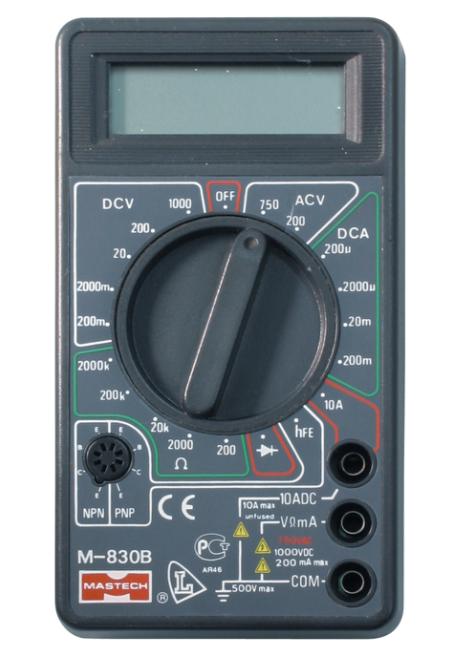You will need
- multimeter, test leads with probes (supplied with the multimeter).
Instruction
1
Insert the test lead black to the COM terminal of the multimeter, then plug the test lead red to the VΩmA socket. Turning the switch of the measuring range, turn the unit on. For measurements of small resistance, turn the switch in the Ω sector and put in position opposite the numeral 200 (measurement Range 0.1 – 200 Ohms). Short between the probes (to check the measuring circuit on the circuit), the display should show the numeric value in the range 0.3 – 0.7. This resistance measuring wire. Each time the multimeter check the resistance value of the measuring wires. When it increases to 0.8 Ohms, replace the test leads. With open-loop wires, the display should show the digit 1 in the leftmost register (very high resistance infinity).
2
To measure touch both contacts in the test circuit. If the chain or the consumer current is OK, the multimeter readings will change: it will show some resistance. In the case of a test for an open in the power cord, fuse or "continuity" of the wires, the resistance should be very low (in the range of 0.7 – 1.5 Ohm). But when checking the electrical consumers (lights, heating elements, winding network transformers) may rise to 150 – 200 Ohms. Moreover, this dependence can be traced – the more powerful the consumer is current, the less resistance.
3
If multimeter readings do not change, switch the measuring range of resistance, put the switch in front of 2000 numbers (0 – 2000 Ohms). And then if the display does not change, switch to the next range and measure again. Note: when the lock opposite numbers 2000K sensitivity of a multimeter is very high and if at the same time take his left and right hands for the contact probe, the instrument will show the resistance of the body that will distort the readings on the multimeter.
Note
All check the circuit and the loads must be disconnected!
Useful advice
Before each measurement, check the measuring circuit for a short. Do not forget to check the battery status: when the device and put the battery the display will show the battery symbol.
